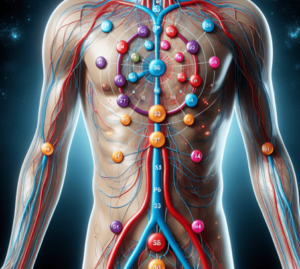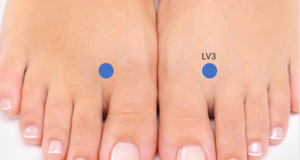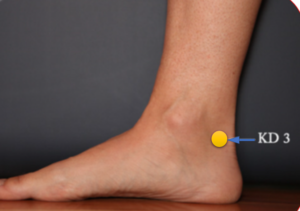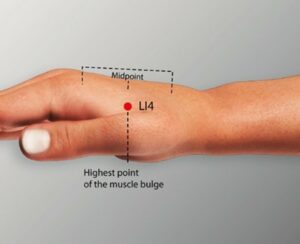Introduction
Diabetes Type 2 is a long-term disease whereby the body is not able to utilize glucose in the right manner due to insulin resistance. From the current advanced medical procedures like oral medication and insulin therapy, more focus is now on other procedures like acupressure which is very useful to diabetes patients. Acupressure can be described as a remedial technique that belongs to Traditional Chinese Medicine that focuses on the application of pressure on the body’s energy points or channels that encourage the flow of energy for healing week organs related to it. This article discusses the merits of using acupressure points for diabetes type 2 treatment, with focus on the points, the impact, and the principle of operation.

What Is Acupressure and Why Is It Relevant to Diabetes?
Acupressure is similar to acupuncture, but as opposed to the latter, the acupressure practitioner does not utilize the needles. It is often assumed in this practice that if the energy in the body is out of balance, then this can cause diseases such as diabetes, fatty liver, kidney stone etc. Acupressure targets specific parts of the body that, in essence, seeks to bring order in the body’s mechanisms of circulation and regulation of glucose in the blood.
There is no exact cure for Type 2 diabetes but symptoms can be managed using acupressure like,
- Improving insulin sensitivity
- Promoting circulation
- Encouragement of relaxation
Besides, acupressure could help manage; neuropathy, a condition that is rife in diabetics and entails nerve damage that brings about loss of feeling or pain in the affected area, often in the limbs.
Key Acupressure Points for Diabetes type 2 Management
1. Spleen 6 (San Yin Jiao)
Location:
This point can be found on the inner line of the lower leg like half the size of an ankle forward.

Benefits:
Because it is effective in enhancing the function of spleen liver and kidney channels, the point SP6 is one of the most frequently touched points while dealing with diabetes. Many reports have pointed out that it aids digestion and improves blood sugar levels in the human body as well as the circulation of blood. That is how SP6 can potentially enhance functions of these organs and assist in regulating Insulin resistance with furthering Glucose metabolism.
How to Stimulate:
The above point has to be pressed with the thumb or fingers for 3-5 minutes and has to be done twice daily. This can also be done by using circular movements with the finger tips applied on the affected area gently.
2. Stomach 36 (Zu San Li)
Location:
Situated four finger-breadth distance beneath the patella, toward the outside of the leg.

Benefits:
ST36 is also called the “longevity point” and it is used to enhance digestion and immunity. Thus its actions benefit stomach and spleen organs of the body that are involved in digestion and metabolic activities. For diabetes, this point helps to improve digestion and glucose control of foods eaten by the body.
How to Stimulate:
Rub the area with the palm of your hand or use the side of your thumb to press vigorously or rotate for 2-3 minutes on each leg. The acupuncture treatment targeted with ST36 every day increases energy and blood sugar levels.
3. Liver 3 (Tai Chong)
Location:
Sitting at the medial side of the foot in between the first and second toes particularly at the dorsal aspect of the foot.

Benefits:
LV3 is the second important acupressure points for stimulating circulation of blood and as a stress relieving point. Since stress is known to worsening insulin resistance and blood sugar fluctuations, the use of this point in the management of the emotional aspects of diabetes makes a lot of sense. Also, LV3 enhances the normal functioning of the liver that is involved in metabolism of glucose among other body organs.
How to Stimulate:
Squeeze the application head so that it covers the foot area and apply pressure to LV3 using your thumb for about 2-3 minutes per foot. A gentle massage is also good for a person.
4. Kidney 3 (Tai Xi)
Location:
The point connects between leg and the inner bump of the ankle and is located near the heel.

Benefits:
KD3 helps in enhancing the Kidney which according to the TCM is the organ that controls the essence of life or life force also known as Qi. Detoxification and regulation of fluids are well known functions of the kidney and these are vital in controlling glucose levels among diabetic patients. This is through enhancing the regulation of energy in the body and relieving other symptoms such as increased frequency in urination which is common to diabetic individuals.
How to Stimulate:
Press the switch KD3 with your thumb for 2-3 minutes on each of the leg assets.
5. Large Intestine 4 (He Gu)
Location:
Located on the hand in-between the thumb and index finger.

Benefits:
LI4 is actually famous for pain-relieving effects, yet, it improves blood flow and adjusts the body’s energy. In relation to this point, it assists in enhancing digestive systems as well as decreasing stress both of which can enhance blood sugar levels in diabetics. Since it is hard to manage headaches, which are a clear sign of high blood sugar, it must be included in an acupressure routine.
How to Stimulate:
Apply approximately 2-3 minutes pressure on LI4 acupressure point using opposite thumb and then change sides.
How acupressure helps in supporting diabetes management
While acupressure is not a standalone treatment for Type 2 diabetes, it offers several complementary benefits:
- Regulation of Blood Sugar Levels: Some of the Acupressure points – SP6, ST36 and BL20 work to enhance the hormonal body’s ability to respond to insulin and increase glucose uptake.
- Improvement in Circulation: Blood circulation and especially in the limbs is a serious issue that diabetic patients have to face. There are acupoints, namely the LV3 and LI4 that if stimulated appropriately, would enhance the blood flow hence minimizing adverse effects of diabetes like peripheral neuropathy.
- Stress and Anxiety Relief: Stress affects Type 2 diabetes because it leads to higher cortisol levels whereby blood sugar levels are high too. Other issues like stress and anxiety can be easily managed thus making it easier for patients with the disease to manage the sickness with the use of acupressure points like PC6 and LV3.
- Neuropathy Relief: Pain, tingling and numbness which is diabetic neuropathy can be treated by stimulating the points like PC6, LV3, KD3 that influences and increases circulation and reduces pain.
Acupressure points for Diabetes type 2: Analysis of Scientific Findings
Some attempts have been made in the previous research on the effects of acupressure on Type 2 diabetes. A study that was conducted in Evidence-Based Complementary and Alternative Medicine showed positive results by claiming that acupressure may help the diabetic patients by increasing t insulin sensitivity and reducing the fasting blood sugar levels. In the Journal of Traditional Chinese Medicine another study established that patients who received acupressure therapy had an improved blood glucose level than the patients who did not get acupressure therapy Neuropathic pain was also lower in patients who had undergone acupressure therapy.
While the experimental details of the changes that occur in the body with the utilization of acupressure on diabetes mellitus still remain to be fully understood, these studies suggest that such intervention would be useful in diabetes mellitus type 2.
Conclusion
Acupressure is a non surgical, or a form of touch therapy which can be a crucial method in self- treatment of Type 2 diabetes. Specifically applied on certain areas of the body, acupressure enhances the digestive processes, the blood circulation and the body’s freedom from stress and some of the complications of diabetes such as neuropathy. It should not be a substitute for conventional medical treatment for Type 2 diabetes but can be useful when integrated into the arsenal of treatment methods as a complementary non-pharmacological treatment to improve the quality of life of the patients. It is important that you talk to your physician before making use of acupressure to manage your diabetes especially if you are using other drugs or going through other therapies.